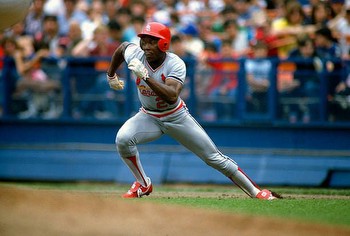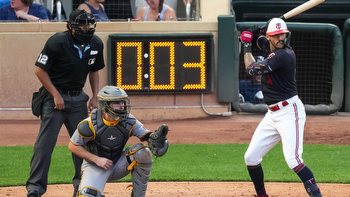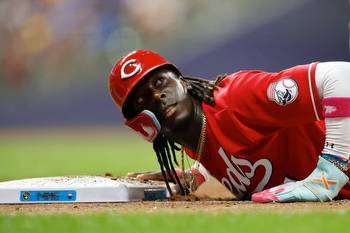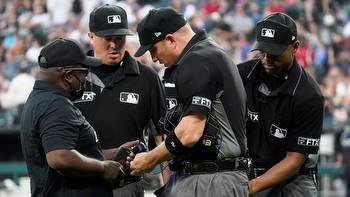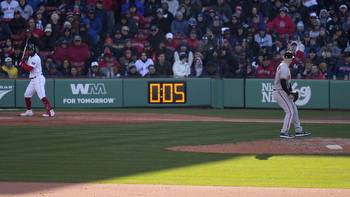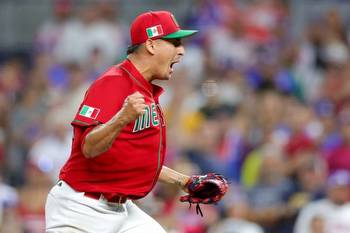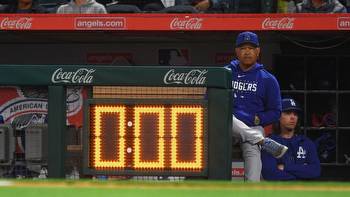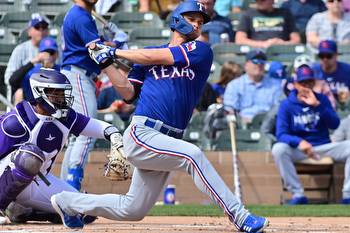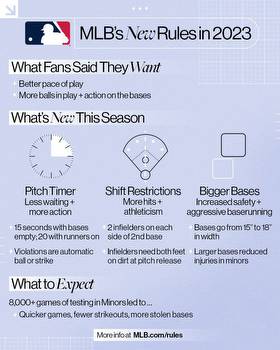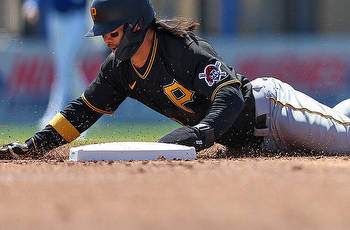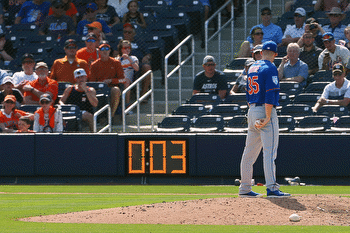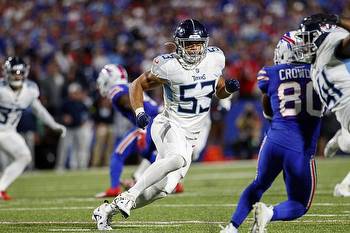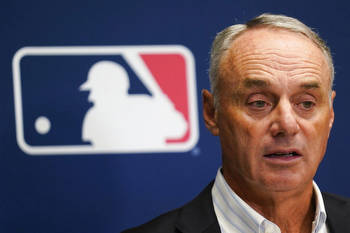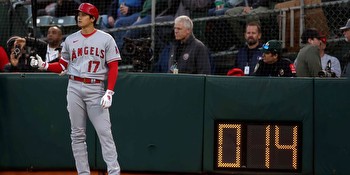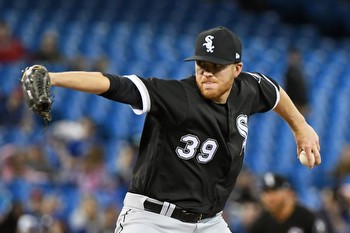3 Atlanta Braves that will need to adjust for the pitch clock

Love it or hate it, the pitch clock is here for the 2023 MLB season. We have already seen some interesting outcomes in Spring Training, especially for the Atlanta Braves.
Based on the pitch clock, some pitchers may need to adjust their timing. Just to refresh our memory if it has not been pounded into our brains enough, here is the new rule according to MLB.com verbatim:
Between pitches, a 15-second timer will be in place with the bases empty and a 20-second timer with runners on base. There are stipulations that go along with it.
- The pitcher must begin his motion to deliver the pitch before the expiration of the pitch timer. Pitchers who violate the timer are charged with an automatic ball. Batters who violate the timer are charged with an automatic strike.
- Batters must be in the box and alert to the pitcher by the 8-second mark or else be charged with an automatic strike.
- With runners on base, the timer resets if the pitcher attempts a pickoff or steps off the rubber.
So, what better time than to look at the current Atlanta Braves pitchers and see who will need to adjust the most.
First, we need to point out a few caveats. Statcast tracks the pitchers tempo, but it is slightly different than the pitch clock. Statcast measures the median time between pitches from pitch release to pitch release, whereas the pitch clock starts when the pitcher receives the throw from the catcher and ends when he starts his delivery.
With this is mind, we need to point out that a player like Kenly Jansen who has a long drawn out delivery would obviously take longer in the Statcast tempo model, even though the delivery itself does not factor in to the pitch clock.
Statcast does point out that on average about six seconds elapses from the start of the delivery to receiving the ball back from the catcher. It takes approximately 1.5 seconds to release the pitch, 0.5 seconds for pitcher-to-catcher, 4.0 seconds for catcher-back-to-pitcher.
So, theoretically, even though it won’t be perfect, we can subtract six seconds from Statcast tempo and get an idea of how a pitcher falls into the time restrictions of the new pitch clock.
For reference, the slowest pitcher in MLB last year in terms of tempo was Jonathan Loáisiga at 25.5 seconds between releases with the bases empty, with the league average being 18.1. With runners on base he averaged 26.4 seconds with the league average being 23.3.
The fastest was Brent Suter. He averaged 12.6 seconds between releases with the bases empty, and 19.1 seconds with the bases occupied.
As you can see, you subtract six seconds and Jonathan Loáisiga would be in trouble averaging 19.5 seconds with the bases empty, when the pitch clock is set to 15.
So, which Atlanta Braves may need to make adjustments?
Fortunately for the Atlanta Braves, there were only six pitchers in 2022 that had their average tempo over the pitch clock equivalent. Of these six, the only three are still on the 40-man roster. A.J Minter, Kirby Yates, and Tyler Matzek.
Seth Elledge, who is currently on the 40 man roster, would also fall into this category.
It should also be noted that other than Jake Odorizzi, there were no other starters in bottom ten in pitch tempo on the team in 2022.
Of course, these numbers are averages, so there is always a chance that even if a pitcher’s average tempo is below what the limit is on the pitch clock, they could have had some pitches that would have been over the limit.
Statcast measures this by “slow” and “fast” pitches. Meaning pitches that took longer than thirty seconds or less than fifteen seconds respectively from release to release. Using the six second adjustment that would be twenty-four seconds and nine seconds respectively when looking at the pitch clock equivalent.
Tyler Matzek
Matzek won’t be playing in 2023 due to Tommy John surgery, but he is one of the three key players for the Atlanta Braves that would most likely have to make adjustments when he gets back on the field.
In 2022 with no runners on base Matzek’s time clock equivalent averaged at 15.6 seconds. With Runners on base, his average was 17.7 seconds. So, theoretically on average he would be fine most of the time with runners on base, but would be cutting it close without runners on quite often. If we look at “slow” pitches, which took thirty seconds or longer (twenty-four when adjusting for pitch clock), 6.3 percent of his pitches without runners would have undoubtedly resulted in a pitch clock violation. If we look at with runners on, 16.7 percent of his pitches were “slow”. Zero percent of his pitches well in the “fast” category.
Of course, with the pitch clock now in place, these percentages would not be as high since he would be forced to adjust. However, it just goes to show that he most certainly will have to work on his timing in the future.
Kirby Yates
Yates is kind of on the opposite end of the spectrum than Matzek. He has now recovered from Tommy John and made a brief appearance in 2023 of seventy-three pitches. Forty-one of those pitches were with the bases empty, and he averaged 16.6 seconds per pitch when adjusted for the pitch clock.
With runners on base his adjusted time was 21.1 seconds. As can be seen, with both runners on, no runners, his average times are both over the allowed time.
As far as “slow” pitches go (which assuredly would have gone over time), Yates saw 7.3 percent of his pitches with no runners on base fall in this category. When runners were on base, it jumped up to 25.0 percent of the time.
Again, this does not mean in a world where a pitch clock exists that Yates would have violated it at a high rate. It just means that he will have adjusting to do.
A.J. Minter
Minter, the Atlanta Braves leader in relief pitcher fWAR in 2022, will most likely have to make the biggest adjustments among players on the 40-man. The only person slower on the Braves in 2022 was Kenley Jansen.
With no runners on, Minter’s tempo was 23.0 seconds between release of pitches, which adjusts to approximately 17.0 seconds on how the pitch clock measures. That means on average he took a full two seconds longer than the pitch clock would allow. With runners on, his tempo averaged 28.0 seconds (22.0 seconds adjusted for the pitch clock). Again, two seconds too slow, on average.
As far as “slow” pitches, this is where one can see that adjustments will have to be made. With no runners on, the numbers are not much different than the previous pitchers on this list at 7.2 percent of the time. However, with runners on, Minter took his time in 2022. 33.3 percent of pitches took longer than twenty-four seconds. Remember, that is a full four seconds longer than the clock allows.
Minter is going to have to make some adjustments with runners on base, or it is not going to be pretty. He is a professional athlete, so adjustments will most likely be made. But, it is still something to consider.
It should be noted that not a single pitch from any three of these pitchers fell in the “fast” category. All three of these pitchers will most likely be fine. Odds are this is not the first time on their career that they have had to make some sort of adjustment.
Time will tell if the adjustments they made in the off-season pay off (sans Matzek, of course since he is recovering).

